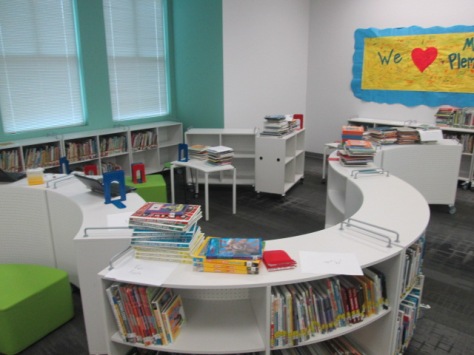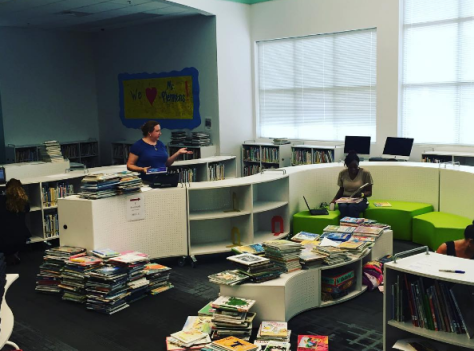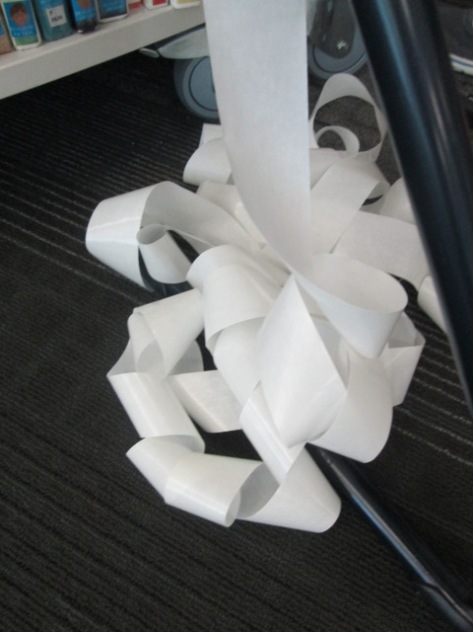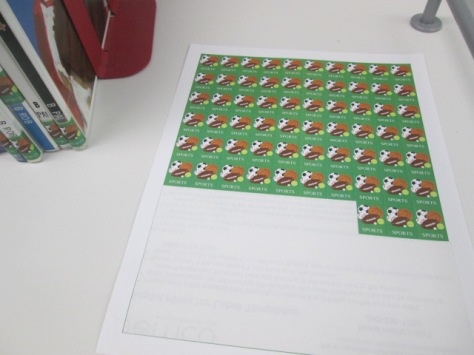
School is back in session in Georgia, and I’m once again reorganizing what happens in the first visit to the library. I’ve tried to steer away from a traditional orientation where students hear the do’s and don’ts in the library. It’s not that they aren’t important, but is that really the message I want to send about reading with the first words that come out of my mouth?
The message that I really want students to hear is about the joy of reading. I want them to hear about how readers talk about books to one another. I want them to hear how books can be windows into other worlds and other perspectives. I want them to hear how books can be mirrors that reflect a part of ourselves back to us.
I also wanted to tackle a problem that bothered me last year. I saw so many students continue to come to the library and spend their whole time standing at the computer typing out topics in the library catalog instead of actually looking at books in our various genre sections. I had hoped that genres would eliminate this, but it hasn’t. I decided to start with something that wasn’t intimidating to most readers: the first lines of a book.
So, here’s what a first library visit looked like for 3rd-5th grade this year.
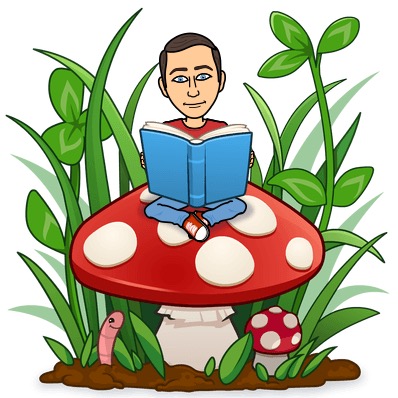
What are you reading?
We started with a question, but instead of asking students to share their own reading, I showed them what I just finished and what I was reading now.
I promised them that all year long I would post what I’m reading on the door of the library so they can always see, even if I’m with a class. I told them that my hope was that anyone in the school could ask anyone else in the school what they are reading and both of them would have an answer. One of the best ways to find a new book is to see what others are reading, so we are giving ourselves permission to freely ask each other throughout the year about books. I also hope that several teachers will begin to post their reading outside their classrooms too. In most classes, a few students said what they were reading now, and I loved how it immediately felt like a connection between us.
Next, I showed students some of my summer reading. I did book talks of Amal Unbound by Aisha Saeed, Front Desk by Kelly Yang, and the Track Series by Jason Reynolds. As soon as I finished book talks, I showed students a picture of a window and a mirror and asked them about their purpose. Then, students brainstormed how a book could be like a window and a mirror. It was a conversation we’ve never had in such an public manner, but so many of them added amazing contributions to the conversation. One standout comment was how a window keeps you safe from things going on outside and a book lets you explore dangerous situations without getting hurt. I let students know that I intentionally chose books this summer that would most likely be windows for me. I wanted to read about people whose lives were very different from my own.
Power of First Lines
This became our invitation to step into the books in the library and begin to look for windows and mirrors for each of us. Ahead of time, I put chairs at each section of our chapter book section: scary, realistic fiction, historical fiction, humor, fantasy, sports, mystery, science fiction, and adventure.

I shared with students how one more great way to discover new books is to visit sections you love and try out the very first lines of several books. Some of my favorite books hooked me with the very first line. I shared Barbara O’Connor’s first line from How to Steal a Dog.
“The day I decided to steal a dog was the same day my best friend, Luanne Godfrey, found out I lived in a car.”
That line has so much story packed into it. Why did she steal a dog? What’s her situation that she lives in a car? What does Luanne think about all this? You can’t help but read on to find out.

I placed students into random chairs in the chapter books and invited them to try as many first lines as possible in about 90 seconds.

Then, they moved to the right to the next chair and had 90 seconds in that section. We continued this process for as many rounds as we could squeeze in.

Students did not take any books with them, but I told them to make mental notes of what books caught their attention. Some students thrived in this experience. Others weren’t happy that they were in a section that they didn’t usually visit. Still others read first lines in one section but not in another. The teacher and I circulated and gently encouraged students to keep giving the books a try. Sometimes that even meant jumping in with a student and reading some first lines for them.
Reminders
Back on the carpet, I asked if anyone found a book that grabbed their attention, and it was amazing to see how many people raised their hands. We used this brief moment to go over some reminders before exploring the whole library to checkout books.
- Enjoy reading as much as you can while you’re here
- Choose what you love, but push yourself too
- Spend less time at the computers, and more time at the shelves
- Respect other learners
- Borrow what you need (limits are different for every reader)
- Honor the line at check out
What happened next is what encouraged me the most. Students could hardly contain themselves as they rushed to the shelves to find their first check outs of the year. Almost none of the students went to the computers and instead went straight to shelves and started opening up books. As students have returned for their 2nd rounds of check outs, they have continued to visit the shelves more than the computers. I can’t wait to see how our momentum builds during the year, and I want to immediately start asking “What are you reading?”
What about K-2?
For the younger grades I did something very similar, but I book talked several picture books including Drawn Together by Minh Li, The Very Last Castle by Travis Jonker, and Hansel & Gretel by Bethan Woolvin. After talking about windows and mirrors, we read aloud All Are Welcome by Alexandra Penfold. I wanted students to see and hear the message that all are welcome at our school and in our library. We used the book to talk about the windows and mirrors we saw within the book and our own school.
This group did the book sampling at the picture book section. Some classes rotated chairs and other classes just stayed in one seat to practice using shelf markers and sampling books.
The Pitfall
Overall, this new orientation experience did everything I hoped it would do, and only time will tell if it got us kicked off in the right way. The one big pitfall of this was that the shelves started to look like a tornado had gone through. Books were pushed back behind other books. Books were on the floor. Books were turned upside down and backwards. I had to pause and take some deep breaths every once in awhile, but when you look at the grand scheme of things, the messy shelves are evidence of excited readers, so it’s hard to complain too much about the mess.
Onward we go to search for the windows and mirrors in our library collection. Onward we go to becoming a school community that shares our reading lives with one another.




